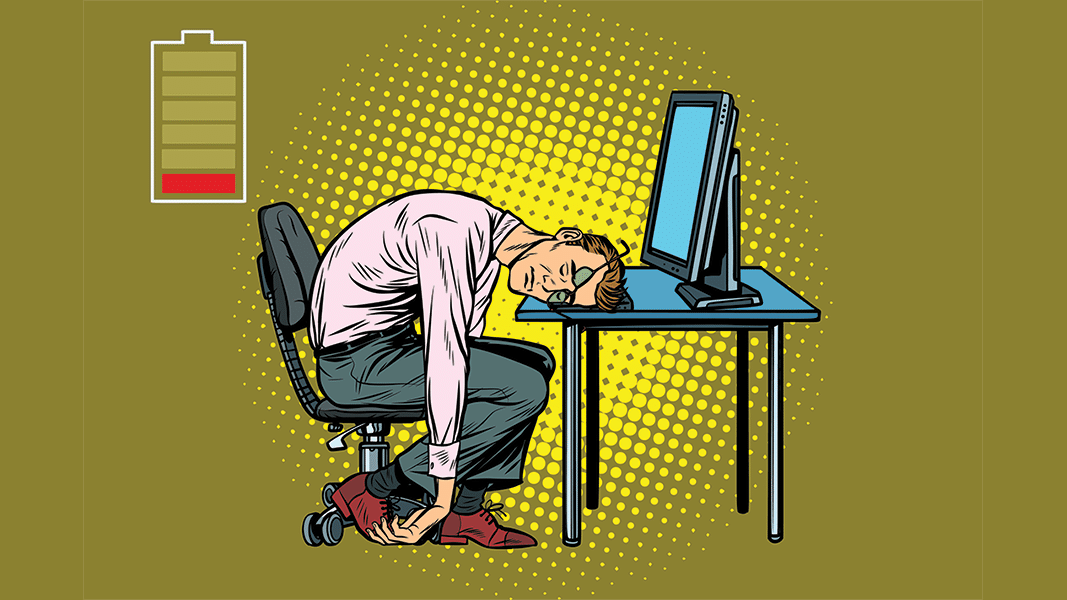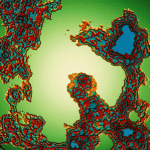In November 2005, my dependably robust health took a sudden swerve into the dark unknown. It started with an occasional dizzy spell. I’d be teaching a college writing class when suddenly I’d feel light-headed and woozy. Excusing myself to run to the restroom, I’d take deep breaths and splash cold water on my face.
My crash-and-burn had begun. Soon new scary symptoms were bursting forth every day or so. I had room-spinning vertigo. All-over pain that made turning my head or biting an apple a self-inflicted torture. Rashes sprang up. Veins bulged. My hair fell out in clumps.
Chewing or speaking would make my face throb and tingle before it went completely numb. When I managed to talk, I struggled to find basic words or form a sentence. Lights, noise, and motion became dreaded enemies, and nausea was a constant companion. I could hardly keep food down. Before long I had shrunk to a sack of bones. I felt as though I was being swallowed alive, my life-force squeezed out of me.
In a few weeks’ time I had morphed from a high functioning writer, professor, and parent into a sobbing lump of misery who could no longer drive a car, read a book, wash a dish, or hold a pen. I was so weak that a routine task — like taking a shower — would flatten me for hours. I spent my time lying motionless in bed, waiting for the day to end. But nightfall brought no respite. Restful sleep had become a distant memory.
“A Very Challenging Disease”
My doctor ordered tests. And more tests. I saw a neurologist, an endocrinologist, an internist, an oral surgeon, several psychiatrists, and three ear-nose-and-throat specialists. I had an MRI and a CAT scan. My blood was analyzed by state-of-the art, high-tech labs. Various possible diagnoses were tossed around: lupus, Lyme Disease, a brain tumor, multiple sclerosis. Mitochondrial dysfunction, temporal mandibular joint disorder … One physician tried to convince me that my illness was due to a buildup of wax in my ears, which he promptly removed, then charged me $250.
One by one, each of these unfortunate scenarios was ruled out. But I was no closer to understanding what was happening to me – until my doctor uttered those fateful words: “Chronic Fatigue Syndrome.” He pronounced his diagnosis somewhat dubiously, as if he doubted its legitimacy. He may as well have said, “We don’t know what it is or what to do about it, and at the moment there’s no cure.”
According to the Centers for Disease Control (CDC), about 2.5 million people in the United States and 17 million worldwide suffer from myalgic encephalomyelitis (ME), also known as chronic fatigue syndrome (CFS). ME/CFS is a serious condition that can cause significant impairment, rendering 75% of sufferers disabled, with 25% homebound and even bedridden. Eighty percent of Americans who meet the criteria for ME/CFS have not been diagnosed. Complicating matters even more, many sufferers are dismissed as addled with a somatic symptom disorder, which basically means, “It’s all in your head,” and prescribed antidepressants.
“Chronic Fatigue Syndrome is a very challenging disease,” says Robert K. Naviaux, MD, head of the Mitochondrial and Metabolic Disease Center at UC San Diego School of Medicine. “It affects multiple systems of the body. Symptoms vary and are common to many other diseases. There is no diagnostic laboratory test. Patients may spend tens of thousands of dollars and years trying to get a correct diagnosis.”
Drugs, Desperation, Depression
ME/CFS is now recognized as a real disease by World Health Organization, the CDC, and the National Institutes for Health, with working groups at Stanford, Harvard, and elsewhere. But many doctors still are not adequately trained to deal with a chronic condition like ME/CFS. There are no FDA-approved treatments and any medications doctors prescribe are off-label and fraught with adverse side effects.
Modafinil, prescribed to combat sleepiness, can cause severe skin rashes and psychiatric events like psychosis, mania, delusions, hallucinations, suicidal ideas, and aggression. Cymbalta, prescribed for pain and depression, is addictive and can trigger severe withdrawal, as well as suicidal thoughts, nerve damage, and weight gain. Vyvanse, an addictive amphetamine, is another problematic choice.
Like many ME/CFS sufferers, I was desperate. I tried medications for pain, sleep, and depression, but nothing helped, and most made me feel worse. After several months on temporary disability, waiting and hoping to get better, I was forced to quit the teaching job I loved.
Though I hadn’t given up on life, I wondered if I should start planning my own funeral.
Taking a Chance on Cannabis
Due to the lack of effective FDA-approved treatments, many desperate ME/CFS patients resort to self-medicating. I was one of those people. I drained my dwindling funds on all kinds of alternative therapies in hopes of finding something — anything — that could help.
I gave up gluten, sugar, and animal products. I swallowed handfuls of supplements and gallons of a slimy green concoction I called “bug juice.” A highly recommended massage therapist pounded me to a pulp while tsk-tsking that “holding on to trauma held me back from getting better.” I received weekly acupuncture from a dear old Chinese gentleman who refused my money when it became clear he couldn’t help me.
I’d heard that some people with ME/CFS found cannabis to be helpful. I hadn’t smoked weed in years, and, frankly, getting stoned sounded like the last thing a completely incapacitated person ought to do. But I was willing to try anything. A resident of California, I obtained a recommendation for medical marijuana and went to a dispensary, where I bought a thimbleful of Purple Kush, a strain recommended by a young budtender for pain and sleep.
That night I rolled a shaggy THC-rich joint. I nervously took a hit and coughed. Within minutes something had shifted. The background noise of paralyzing pain grew quiet, and a calming sensation washed over me. I effortlessly floated off to sleep for the first time in more than a year. In the morning I felt different — not cured, but hopeful. I’d finally found something that helped.
Enter CBD
According to ME/CFS researcher Dr. Nancy Klimas, drugs typically prescribed for sleep — like Ambien and Valium derivatives Restoril and Klonopin — can knock you out but won’t lead to the deep, restorative sleep so crucial for those afflicted with ME/CFS. Chronic insomnia inhibits the body’s ability to repair daily cellular damage, and this is especially destructive to these patients. To fall asleep and stay asleep is a turning point for those who manage to achieve it, and most notice subsequent improvement in their symptoms.
I continued my nightly toke of THC-rich cannabis, and after a few days I was able to get out of bed and totter around. I left the house for short walks, which grew longer over time. My appetite improved, and I started to gain some much-needed weight.
Then a friend told me about CBD, a non-intoxicating cannabinoid, which was at the time a novelty in California’s medical cannabis community. He thought it might help my condition. CBD-rich cannabis hadn’t yet become available in most medical cannabis dispensaries, but he sourced some flowers with a 2-to-1 CBD-to-THC ratio.
When I added CBD to my cannabis regimen, more symptoms relinquished their stranglehold. The pace was slow but noticeable. I spent less time in bed. I began to read and write again. One night, I went to see my daughter Melati’s theater performance, the first evening I’d been out in a year. Abundant, grateful tears fell as I watched her onstage. With the help of homegrown CBD-rich cannabis, I was coming back to life.
Biomarker Breakthrough
How is it possible that cannabis could help my ME/CFS when prescription medications couldn’t touch it, or did more harm than good? The answer might lie in new research that aims to explain what underlies the disease.
Until recently, one of the major challenges has been the lack of a clear biomarker — a measurable biological indicator of a disease’s existence — for ME/CFS. But soon there may be a reliable way to test for this disorder.
A 2016 study published in the Proceedings of National Academy of Sciences identified a “characteristic chemical signature” in ME/CFS sufferers, with an underlying biology similar to the state of dauer. “Dauer, like hibernation,” the study explains, “is a means of preserving survival by severely curtailing functions of ordinary life such as energy, digestion and movement.”
Mark Davis, an immunologist at Stanford University, has made some interesting discoveries with T cells, a type of lymphocyte that plays a major role in the immune system. T cell overactivation was found in the blood of ME/CFS patients, similar to what’s found in immunological cases like cancer, multiple sclerosis or infections. A 2015 paper by German scientists reported a marked increase in specific antibodies of chronic fatigue patients. And more evidence of a hyper-inflammatory response was presented in a 2017 study by Davis and Jose Montoya, showing elevated cytokines.
“There’s been a great deal of controversy and confusion surrounding ME/CFS – even whether it is an actual disease,” Davis says. “Our findings show clearly that it’s an inflammatory disease and provide a solid basis for a diagnostic blood test.”
Immune Overdrive
With chronic fatigue, the immune system, spurred by an unknown cause, goes into full aberrant fight mode, activating a hyper-inflammatory response and setting off a nightmarish carnival of symptoms. A 2015 article in Science Advances reported heightened immune activity in ME/CFS patients during the early phase of the disease that was “consistent with a viral trigger or disrupted immune regulatory networks.” But in later stages, the levels of immune disturbance were much lower. It appears that whatever immunological threat initially triggered the disease could have been resolved – and yet the body continued its inflammatory, foe-fighting stance.
In ME/CFS patients, inflammation and pain are like conjoined demon twins. When the body responds to a perceived threat, it sends out legions of chemicals into the blood and tissues to beat back foreign invaders. When functioning normally, this inflammatory response is an important, life-saving mechanism, but in ME/CFS sufferers it’s driving pedal-to-the-metal, with severe pain and other symptoms as a consequence.
Why would the body keep shadow-boxing against an opponent that’s not really there? Dr. Robert Naviaux at UC San Diego explores this question in a beautifully-written article about his work on ME/CFS, mitochondria and “cell danger response” (CDR) — a term describing the body’s cellular metabolic response to chemical, physical and biological threats. Naviaux found that in ME/CFS patients, the CDR persists abnormally: “Whole body metabolism and the gut microbiome are disturbed, the collective performance of multiple organ systems is impaired, behavior is changed, and chronic disease results.”
Given that a runaway immune response and marked inflammation are major players in ME/CFS, it makes sense that both CBD and THC, two potent anti-inflammatory compounds, could be profoundly therapeutic. Anecdotal evidence bears this out. Do a search in any ME/CFS social media support group, and you’ll find accounts from people who have successfully used cannabis and/or hemp-derived CBD to improve their symptoms.
Anti-Inflammatory Cannabis
There are many published reports demonstrating the effects of cannabis on inflammation. A 2010 study in Future Medicinal Chemistry indicated that several cannabinoids were found to calm the inflammatory response through multiple pathways, which led to a reduction of associated symptoms. A subsequent report by scientists at the University of South Carolina disclosed that a combination of THC and CBD suppressed neuroinflammation (swelling of the brain) in patients with MS. The same neuroinflammatory symptoms – linked to cognitive impairment and severe neuropsychological problems – have been observed in brain areas of ME/CFS patients. Thus it’s reasonable to consider that cannabis could also be efficacious for treating neuroinflammation in ME/CFS.
CBD might also help to alleviate the difficult mood problems that ME/CFS sufferers experience. Brazilian scientists reported that CBD has “acute anxiolytic and antidepressant-like effects” and “therapeutic potential over a wide range of non-psychiatric and psychiatric disorders such as anxiety, depression and psychosis.” This assessment concurs with anecdotal accounts from people using CBD products that are widely available in state-licensed cannabis storefronts and elsewhere via unregulated sources.
There are many claims about CBD’s utility as a sleep aide, but the science is less clear. Several animal studies and some human studies suggest that CBD’s anxiety-relieving properties may help to improve sleep onset and quality. In one study, the administration of a generous dose of CBD (160 mg/day) increased total sleep time and decreased the number of arousals during the night. But low-dose CBD has been associated with increased wakefulness, underscoring CBD’s biphasic, dose-dependent effect.
THC-rich cannabis has also been shown to be helpful for sleep – with some caveats. In a 2017 literature review pertaining to “cannabis, cannabinoids, and sleep,” THC was found to help patients fall asleep. But THC can also cause daytime drowsiness, and tolerance to THC can develop, rendering it less effective. The review notes that THC combined with CBD in a 1:1 ratio has been associated with sleep improvements among patients with chronic pain conditions. This synergistic interplay of plant cannabinoids can mitigate pain as well as insomnia, while reducing THC’s intoxicating effects.
A Lifelong Balancing Act
THC, CBD, and other cannabis components confer therapeutic effects by interacting with what scientists refer to as the “endocannabinoid system.” A principal function of this system is to maintain homeostasis, a state of dynamic equilibrium that keeps everything running smoothly. People with ME/CFS are the living antithesis of homeostasis, their biological processes have gone completely bonkers.
If we blend what we know about the pathophysiology of ME/CFS with our current understanding of cannabis therapeutics, one overarching theme emerges: ME/CFS is a disease of total body disequilibrium, and cannabis is a biological equalizer with the potential to treat several symptoms simultaneously. For many of us who had all but given up hope of a normal life, it’s as if cannabis was tailor-made for our disorders. For the chronically ill, a little hope goes a long way.
It’s been almost fifteen years since I was taken down by a mystery illness. These days I am functioning at about 80 percent of my physiological capacity – and that feels like remission to me. I manage my health by eating a mostly plant-based diet, exercise, stress reduction, some supplements, and daily dosing with a CBD-rich tincture, with occasional THC-rich cannabis at night.
I won’t claim that cannabis completely cured my ME/CFS, but I will say that, as part of a broader healing protocol, it has helped immensely. I hardly think about my diagnosis anymore. There are other mysteries I’m curious about, and I’m busy unraveling them, and in the meantime, I’m thriving.
Melinda Misuraca is a Project CBD contributing writer with a past life as an old-school cannabis farmer specializing in CBD-rich cultivars. © Copyright, Project CBD. May not be reprinted without permission.
Recommended Readings
Cannabis Instead of Polypharmacy?
Could cannabis be the safer alternative prescribers and patients are looking for?
Cannabis & Sleep Disturbances
What role does the endocannabinoid system play in sleep? Can cannabis help you sleep better?
Trade in Your Ibuprofen for Cannabis
Suffering from inflammation? Consider cannabis.












